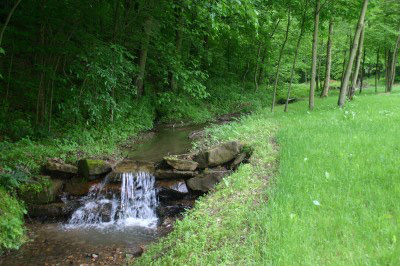Clean Water Rule also concerns shale gas industry
Thursday, July 9, 2015

SALEM, Ohio — The federal extension of the Clean Water Act, also known as the waters of the U.S. legislation, or more recently — the Clean Water Rule, will affect more than just agriculture.
The rule, adopted by the U.S. EPA and the Army Corps of Engineers, is slated to take effect Aug. 28. Initially, the rule resulted in nationwide controversy over fears that it would expand federal regulation over farmers’ ditches, puddles and ponds.
In recent months, the EPA has rewritten the rule and insists that it will have minimal impact on agricultural operations, and no impact on ditches that do not run regularly, or are not part of streams. (Related: EPA finalizes Clean Water Rule.) But at least 15 state attorney generals disagree and have filed two separate federal lawsuits to prevent the new rule from taking effect.
Impact to shale
Beyond agriculture, energy exploration and shale gas companies are also concerned about the new rule. Lee Fuller, executive vice president of the Independent Petroleum Association of America, said in a statement, that the new rule will affect all oil and gas development as well.
According to Fuller, an energy company, or anyone else, would need to obtain a federal permit for any activity that results in a discharge into any body of water covered by the new definition of “waters of the United States,” including small streams and wetlands.
The Independent Petroleum Association says it represents 95 percent of the nation’s oil and gas wells. Fuller said he’s concerned the rule will lead to “retroactive applications” and added costs to business operations.
Permit needed
According to the EPA, a Clean Water Act permit is needed only “if a water is going to be polluted or destroyed.”
The EPA, and its administrator, Gina McCarthy, are billing the new rule as a necessary step in protecting drinking water for the 117 million Americans that EPA says get drinking water from streams that lack protection. The EPA says the new rule is a way of clarifying existing laws under the Clean Water Act, and adding clarity following ambiguous Supreme Court decisions in 2001 and 2006.
“For the water in the rivers and lakes in our communities that flow to our drinking water to be clean, the streams and wetlands that feed them need to be clean, too,” McCarthy said in a released statement.
It’s unclear what all factors may have led to the new rule, but McCarthy said a big one was climate change.
“Protecting our water sources is a critical component of adapting to climate change impacts like drought, sea level rise, stronger storms, and warmer temperatures,” she said.
Still evaluating
In Pennsylvania, where shale drilling has been king, state agencies are still reviewing the rule and trying to decide how it will affect them.
Neil Shader, press secretary for the Pennsylvania Department of Environmental Protection, said the department is still evaluating the rule and “how it will impact DEP’s regulated community, such as unconventional drilling and agriculture.”
Shader said Pennsylvania has always had “robust water protection regulations,” and wetlands protections that are broader than the federal government. He said the federal rules won’t change the state’s regulations, and that the state will continue working in partnership with EPA and the U.S. Army Corps of Engineers.
Supporters
For some, the new rule is a hard-fought relief. Adam Garber, field director for PennEnvironment, said the rule is a “huge victory,” and one that will ensure wetlands and streams are protected. He said there have been many misunderstandings about what’s actually in the rule, but said farmers and businesses were actually granted many exceptions.
According to the U.S. EPA, these are the key things the Clean Water Rule does:
• Defines and protects tributaries that impact the health of downstream waters. The rule says that a tributary must show physical features of flowing water — a bed, bank, and ordinary high water mark — to warrant protection.
• Provides certainty in how far safeguards extend to nearby waters.
• Focuses on streams, not ditches. The rule limits protection to ditches that are constructed out of streams or function like streams and can carry pollution downstream.
According to the U.S. EPA, these are the things the rule does not do:
• Protect any types of waters that have not historically been covered by the Clean Water Act.
• Add any new requirements for agriculture.
• Interfere with or change private property rights.
• Regulate most ditches.
• Change policy on irrigation or water transfers.
• Address land use.
• Cover erosional features such as gullies and non-wetland swales.
• Include groundwater, shallow subsurface flow and tile drains.




